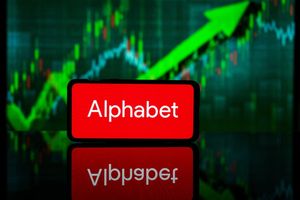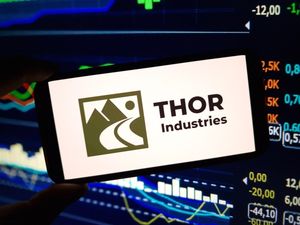
There are deeper levels to the big machine, the financial market, where investors need to understand the cogs that make it run and when one of them is starting to speed up or slow down in relation to all others. Understanding the world of global macro strategies, where knowing what sudden shifts might implicate for other markets, is the key to anticipating the next market move, placing the odds in favor of those who saw it coming.
[content-module:CompanyOverview|NASDAQ: TLT]Today, the S&P 500 is experiencing increased volatility due to President Trump's recent announcements regarding trade tariffs and a recent Federal Reserve (the Fed) outlook that might point to the United States economy slowing down into a potential recession. Of course, the markets took this to heart and delivered a reciprocal level of volatility, creating a need for investors and traders to find other places to hedge away this risk.
Understanding global macro starts with a “top-down” view of the global economy, which is where today’s list will come into play under circumstances that will make all the sense for the average investor. Before digging deeper into those trends, one exchange-traded fund (ETF) in the United States, the iShares 20+ Year Treasury Bond ETF (NASDAQ: TLT), must be considered. Then, international markets will come into play in this broader view.
A Flight to Safety Might Be Triggered
Whenever stocks and other risky asset classes start to become more volatile and, therefore, more risky, institutional and retail investors tend to engage in a “Flight to Safety” behavior, seeking less volatility and an asset class that can protect them from the chaos happening in other areas.
Today, this bond ETF offers investors a better way to be in the market outside of this risky asset volatility. Bonds' safety makes them a primary target during times of increased economic uncertainty. As their prices move opposite of their underlying interest yield, President Trump's recent desire for lower interest rates might be a foreshadowing of what’s about to come.
This is why this bond ETF has outperformed the broader S&P 500 index by as much as 10% over the past month alone. It gives investors the tools they need to escape the volatility in the stock market through lower volatility setups and a rotation that makes fundamental sense as well.
Relative Valuations Send Momentum to International Markets
[content-module:CompanyOverview|NASDAQ: MCHI]Over the past month, not only did the bond ETF outperform the broader S&P 500, but also two specific ETFs representing overseas markets.
Starting with the most controversial one in Asia’s powerhouse, the iShares MSCI China ETF (NASDAQ: MCHI), has also left the S&P 500 behind by nearly 12%.
Then, there is a quiet economy in Latin America making a few splashes lately, and that is Brazil.
During this same period, the iShares MSCI Brazil ETF (NYSEARCA: EWZ) followed the same trend as the China ETF, leaving the United States stock market index behind by 9%.
[content-module:CompanyOverview|NYSEARCA:EWZ]Now, investors might be wondering what’s causing the rotation out of the S&P 500 and into these emerging economies, and that is where having that “top-down” view of the global markets makes a global macro strategy so powerful. It all starts with relative valuations in what most have termed the “Buffett Indicator,” a ratio between a country’s GDP and its stock market.
For the United States, this ratio stands at nearly 200%. For reference, any figure above 100% starts looking a bit dangerous in terms of valuations for businesses in a country. Plus, this 200% would make the S&P 500 the most expensive it’s ever been, according to this measure.
It would make sense, then, to see capital flow out of the most “expensive” market as soon as the momentum starts to fade and volatility comes into the scene. The next step is for this capital to end somewhere else, somewhere that’s not seen as expensive or as risky when it comes to this sort of valuation.
Looking at China’s ratio, the number falls at only 67%, leaving a significant amount of room for its stock market to rise to the 100% mark or even past it. This is why technology stocks like Alibaba Group (NYSE: BABA) have nearly doubled over the past six months alone, as the flight to cheaper markets is triggered by S&P 500 volatility.
For Brazil, the story looks similar at a ratio of 47% today; this is where investors could quickly shift their views from the United States and find themselves invested in Brazil’s stock market. Over the past month, a Brazilian stock like Vale (NYSE: VALE) has outperformed the S&P 500 index by over 13%, showing the ease of flow investors can achieve when global macro views are implemented.
Where Should You Invest $1,000 Right Now?
Before you make your next trade, you'll want to hear this.
MarketBeat keeps track of Wall Street's top-rated and best performing research analysts and the stocks they recommend to their clients on a daily basis.
Our team has identified the five stocks that top analysts are quietly whispering to their clients to buy now before the broader market catches on... and none of the big name stocks were on the list.
They believe these five stocks are the five best companies for investors to buy now...






